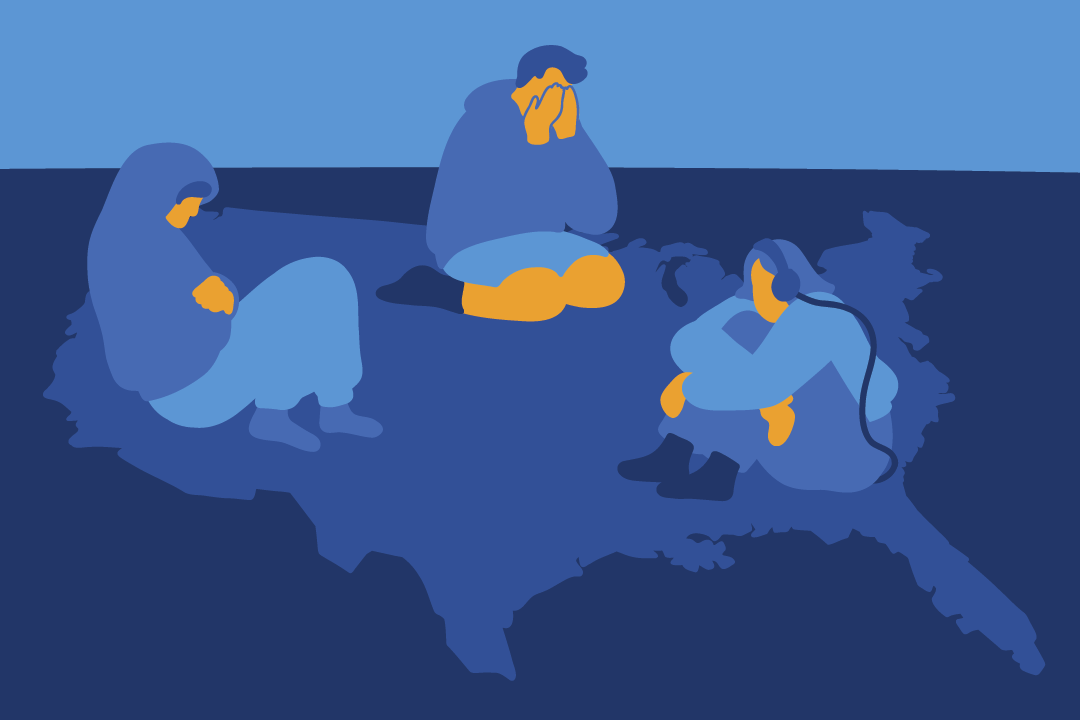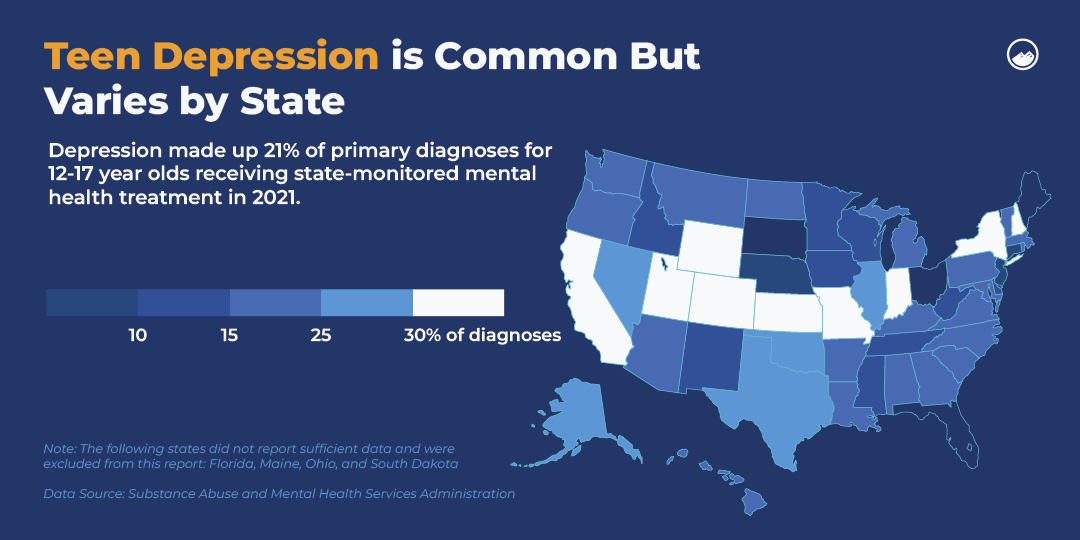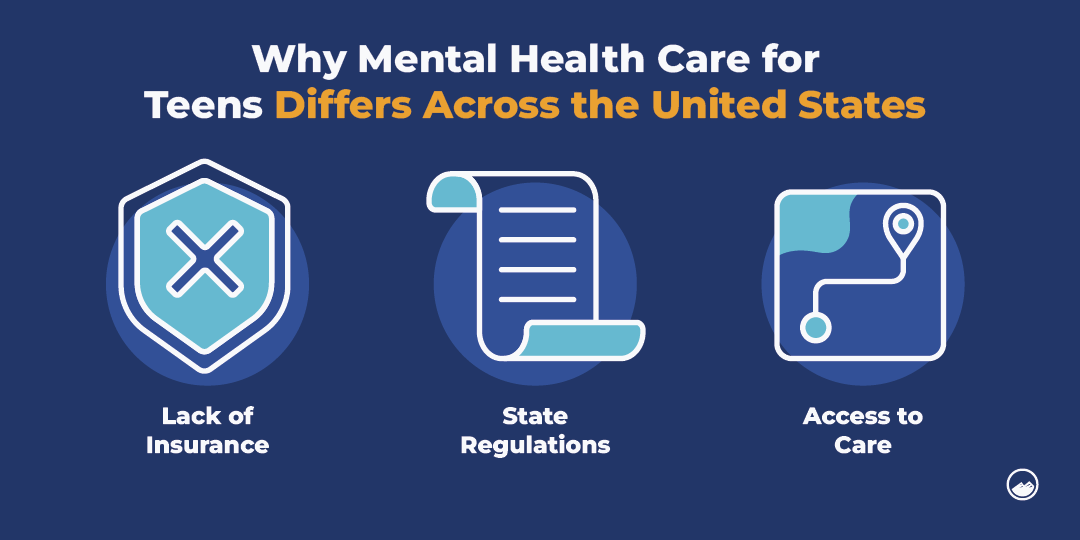
States with the most teenagers diagnosed with depression
This story originally appeared on Sandstone Care and was produced and distributed in partnership with Stacker Studio.
States with the most teenagers diagnosed with depression
At least 280 million people across the world experience depression, according to the World Health Organization. Unfortunately, one group is particularly well acquainted: teenagers.
Sandstone Care analyzed data from the Substance Abuse and Mental Health Services Administration to find which states have the highest rates of teenagers diagnosed with depression. This was measured by the percentage of individuals aged 12 to 17 who have a primary diagnosis of depression as a share of all teens receiving treatment at a mental health facility monitored by that state in 2021.
Depression was the most common diagnosis among teens receiving mental health treatment in 2021, according to data compiled and recently released by the Department of Health and Human Services. It accounts for 1 in 5 diagnoses, up slightly from 2016.
While impossible to attribute a mental health diagnosis to a single cause, one factor has undeniably left a widespread impact: COVID-19. In 2021, Surgeon General Vivek Murthy released a special advisory directed at recognizing and protecting risks to youth mental health in the wake of COVID-19, including actionable directed suggestions for youth, families, educators, employers, health professionals, media organizations, and social media companies, among others.
Following the onset of the COVID-19 pandemic in the spring of 2020, young people were particularly negatively affected by stay-at-home orders, which shifted them to remote learning, deprived them of formative social experiences, and increasingly isolated an already naturally lonely age group. Among young people, LGBTQ+ and socioeconomically disadvantaged teens, as well as those from communities of color, were already particularly vulnerable pre-pandemic. After the onset of COVID-19, they were disproportionately affected by the pandemic.
Each state operates its mental health administration differently. Wisconsin, for instance, regulates private facilities and individual practitioners, whereas Missouri specifically earmarks funds for juvenile and family court systems to provide mental health services. The following states did not report sufficient data and were excluded from this report: Florida, Maine, Ohio, and South Dakota.
Read on to learn how depression rates among teenagers have changed since the start of COVID-19 and which states have the highest diagnosis rates.

Mental health care for teens differs across the US
While depression remained a predominant diagnosis for teenagers nationwide, the story in every state was not the same. The reasons for disparate care vary, from true differences in depression levels to unequal youth access to care. Many teens lack insurance that adequately covers mental health care, with Medicaid, in particular, offering unreliable or inadequate access. Discrepancies between data collection and how each state prioritizes mental health care also play a role.
Missouri uniquely includes mental health services received in juvenile detention centers, as the state focuses on providing rehabilitation to youth offenders. This was instituted under the Improving Community Treatment Success program—aimed at providing long-term support to incarcerated persons struggling with mental health—in hopes that it will lessen their chances of reoffending. The program was piloted in 2018 and was deemed successful enough to expand the following year.
Connecticut, on the other hand, regulates mental health treatment at what the state calls a "Private Intermediate Treatment Facility," defined as a dedicated institution for addressing mental health "problems, disturbances, dysfunctions or disorders" that don't require hospital-level care.
"Access to care" can be a vague concept to a certain degree because it encompasses many moving parts. These include identifying whether one should seek private or integrated care, obtaining insurance coverage for costs, and sometimes long wait times and delays.
According to Mental Health America, the best states for accessing care were generally located in New England and the Great Plains, including Wyoming, Colorado, Utah, Maine, New Hampshire, and Vermont. The worst was in the South, including South Carolina, Georgia, Alabama, Mississippi, and Tennessee. These are also states where there are higher rates of mental health professional shortages, which is more common in rural areas of the country.

How state and federal government entities are responding
Spurred by the alarming rise in mental health disorder rates, many organizations and government entities realize the difficulties teens and their families are having in accessing mental health care and are working to make a change.
The Health Resources and Services Administration has worked to enable pediatric primary care providers to collaborate more closely with mental health professionals, providing nearly $25 million toward training resources to strengthen school-based mental health resources. SAMHSA has also awarded millions of dollars in funding to expand community mental health services and state agencies and for the American Academy of Pediatrics to establish the National Center of Excellence on Social Media and Mental Wellness.
Story editing by Nicole Caldwell. Copy editing by Paris Close. Photo selection by Ania Antecka.



